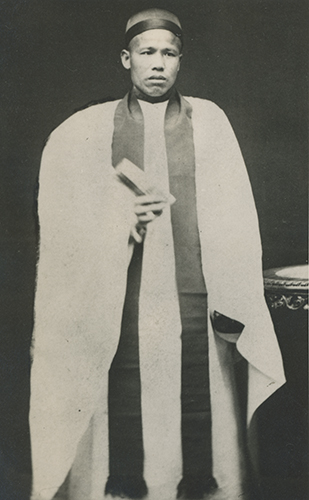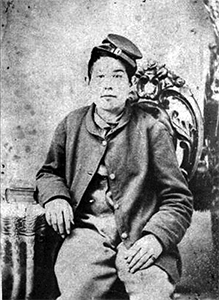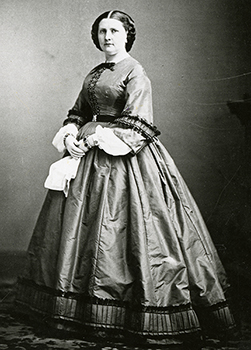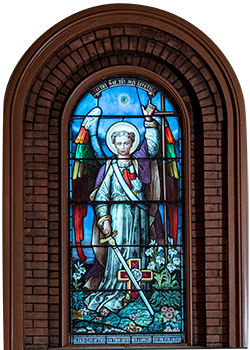Missionaries & Visionaries II

Hong Neok Woo (1834 – 1919)
- Born in Zhangzhou, China to a family of farmers, Woo was educated by the American Church Mission established by the Episcopal Church.
- He came to America as a cabin boy on the frigate Susquehanna, flagship of the squadron which had opened the ports of Japan to the world’s commerce. On ship he was befriended by Dr. John S. Messersmith, a naval surgeon in whose home he lived on North Lime Street, Lancaster 1855 – 1864.
- During his time in Lancaster, Woo learned the printing trade at the Lancaster Examiner and Herald office and was a faithful worshipper at Saint James.
- In 1860, Woo became an American
 citizen, the first Asian to be naturalized in Lancaster.
citizen, the first Asian to be naturalized in Lancaster. - When the Confederate Army invaded Pennsylvania, he served as a member of Company I, 50th Regiment, PA Volunteers.
- In 1864, he returned to China and was ordained to the priesthood. He died in 1919 after a long and highly regarded ministry as a hospital assistant, chaplain, teacher and general missionary. He is buried in Westgate Cemetery, the oldest Christian graveyard in Shanghai.
Harriet Lane Johnston (1830 – 1903)

Harriet Lane Johnston J. C. Buttre, c. 1857–1861. Courtesy of LancasterHistory, Lancaster, PA.
- Born to Jane Buchanan Lane and Elliot Tole Lane. Orphaned at age 11, she moved to Lancaster to live with her uncle and guardian, James Buchanan.
- After the bachelor Buchanan was appointed Ambassador to Britain in 1853, Harriet joined him as his official hostess. She enjoyed a rich social life, developing a deep relationship with the royal family, especially the young Queen Victoria.
- Harriet’s experience, beauty, and grace as a hostess made her the obvious choice to be President Buchanan’s official hostess. Harriet was the first hostess at the White House to be called “First Lady.” She used her position to promote three vital causes: hospital reform, prison reform, and the improvement of the conditions of Native Americans.
- In 1866, she married the Baltimore banker Henry Elliot
Johnston and had two sons. She donated a stained-glass window of the archangel Michael to Saint James in her son James’ memory. The angel’s face bears a likeness to James, as seen in an original photograph at Wheatland. - Harriet’s wealth and generosity are responsible for many nationally significant institutions and initiatives: the donation of many valuable European works of art to the Smithsonian American Art Museum; the endowment of the Harriet Lane Home for Invalid Children at Johns Hopkins Hospital in Baltimore; and the funding of the Lane-Johnston Building of the St. Albans School in Washington D.C.

Memorial window in Saint James Church for Harriet Lane Johnston’s son, James, in which he is depicted as the archangel Michael. Courtesy of Nick Gould Photography, Lancaster, PA.
